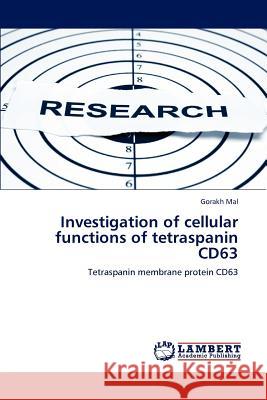Investigation of cellular functions of tetraspanin CD63 » książka
Investigation of cellular functions of tetraspanin CD63
ISBN-13: 9783659187582 / Angielski / Miękka / 2012 / 312 str.
The tetraspanins are a superfamily of widely expressed membrane proteins with four conserved transmembrane domains, small (EC1) and large (EC2) extracellular domains, and short cytoplasmic N and C-termini. Tetraspanins have been linked to many basic cell processes including adhesion, motility, activation and fusion. However, the function of individual tetraspanins remains difficult to define. This project investigated the function of human tetraspanin CD63, by studying the behaviour of mutants transfected into model cell lines. CD63 is mainly associated with membranes of intracellular vesicles, although cell surface expression may be induced. Initially, deletion and point mutants were used to investigate the role of the C-terminus, which contains a putative lysosomal-targeting/ internalisation motif (GYEVM). C-terminal mutants showed increased surface expression and decreased intracellular localisation relative to CD63Wt. Antibody-induced internalisation was reduced in C-terminal deletion mutants and abolished in G/A and Y/A mutants, showing the crucial role of these residues in internalisation.
The tetraspanins are a superfamily of widely expressed membrane proteins with four conserved transmembrane domains, small (EC1) and large (EC2) extracellular domains, and short cytoplasmic N and C-termini. Tetraspanins have been linked to many basic cell processes including adhesion, motility, activation and fusion. However, the function of individual tetraspanins remains difficult to define. This project investigated the function of human tetraspanin CD63, by studying the behaviour of mutants transfected into model cell lines. CD63 is mainly associated with membranes of intracellular vesicles, although cell surface expression may be induced. Initially, deletion and point mutants were used to investigate the role of the C-terminus, which contains a putative lysosomal-targeting/ internalisation motif (GYEVM). C-terminal mutants showed increased surface expression and decreased intracellular localisation relative to CD63Wt. Antibody-induced internalisation was reduced in C-terminal deletion mutants and abolished in G/A and Y/A mutants, showing the crucial role of these residues in internalisation.











